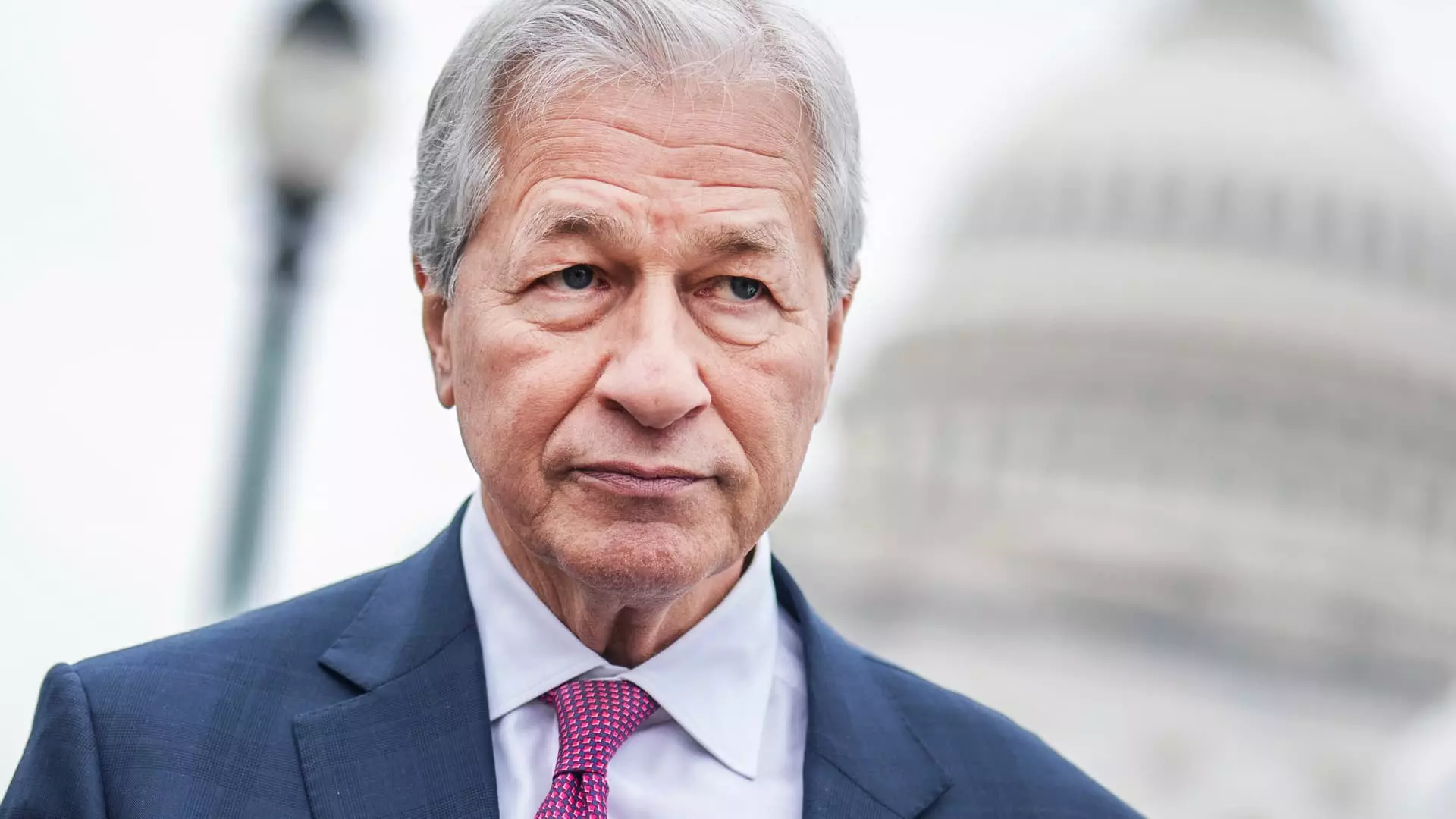The recent comments by JPMorgan Chase CEO Jamie Dimon reveal a cautious yet strategically significant stance toward stablecoins, highlighting a broader tension within the financial industry. Dimon’s skepticism about the appeal of stablecoins underscores a traditional banking mindset rooted in skepticism of new technologies that threaten established financial paradigms. While he acknowledges the potential of stablecoins, his question about their utility reflects a discomfort with change—a reluctance to fully embrace a revolutionary payment mechanism that could fundamentally alter the financial landscape.
Despite his doubts, JPMorgan’s move to develop a proprietary, limited stablecoin for its clients signifies a pragmatic acknowledgment that staying entirely on the sidelines is a perilous mistake. Their involvement permits them to understand, influence, and ultimately control this emerging sector before it reshapes the payments industry. This dual approach—investing cautiously in novelty while expressing public reservations—exposes a core insecurity: traditional banking institutions recognize the disruptive potential of cryptocurrencies but are conflicted about fully trusting this new frontier.
The hesitance is less about the technology itself and more about the implications for trust, regulation, and control. As custodians of a highly regulated, status quo-driven system, banks like JPMorgan are wary of losing their monopolistic grip on payments and deposits. They see stablecoins as a double-edged sword—an innovation that could democratize money but also challenge their authority if not carefully managed.
The Political and Economic Stakes of Embracing or Rejecting Stablecoins
From a centrist liberal perspective, the resistance to stablecoins poses profound risks—not only to the integrity of our current financial system but also to society’s broader quest for equitable access to financial services. On the one hand, stablecoins have the potential to democratize finance, offering faster, cheaper, and more inclusive payment options that could empower the unbanked and underbanked populations. On the other hand, their rapid development threatens to sideline regulators, destabilize traditional financial institutions, and foster unchecked innovation that might favor tech giants over accountable banking.
Dimon’s cautious stance reveals a broader discomfort with the unchecked forces of innovation that can undermine financial stability. It’s clear that traditional banks are not eager to see their dominance challenged by decentralized, opaque, or lightly regulated entities. Yet, in doing so, they risk fostering an environment where financial innovation is driven more by corporate interests and technological turf wars than by the public good. The “wait and see” approach champions stability, but it also implies a reluctance to share power—power that could be redistributed through the responsible adoption of stablecoins.
Moreover, the narrative that stablecoins are merely a tool for faster or cheaper payments ignores their potential for systemic risks. Without proper oversight, stablecoins could become a conduit for financial instability, especially if their backing mechanisms falter or if they become weaponized for illicit activities. From a centrist standpoint, the challenge lies in balancing innovation with regulation—supporting technological progress without sacrificing financial security or social equity.
Strategic Fumbles or Forward-Thinking? The Real Implication of Banking Giants’ Moves
The statements by other banking giants, such as Citigroup and Bank of America, highlight a critical reality: mainstream financial institutions are circling the stablecoin space, not because they’re convinced it’s the ultimate future, but because they recognize the existential threat of being left behind. Their interest in tokenized deposits and digital custody reflects a recognition that the traditional role of banks must evolve or risk obsolescence.
However, JPMorgan’s reluctance to collaborate openly among banks over stablecoins reveals a deeper uncertainty about collective action in this nascent domain. Banking leaders understand that cooperation could either accelerate innovation or exacerbate systemic risks, and their cautious stance suggests they are more comfortable acting as gatekeepers rather than pioneers.
This ambivalence reveals a fundamental dilemma: whether to embrace the disruptive potential of stablecoins or to cling to the comfort of regulatory control and existing profit models. In a centrist liberal view, the danger lies in letting fear of instability hinder progress. Instead, a thoughtful, well-regulated expansion of stablecoin technology could enhance financial inclusivity and stability—if policymakers are willing to craft a framework that balances innovation with responsibility.
By resisting full engagement, banks risk being blindsided by fintech competitors and tech giants that are quicker to adapt. Meanwhile, the undercurrent of skepticism from leadership like Dimon underscores the ongoing power struggle—a classic battle between preservation and transformation that will define the future of our financial system.

